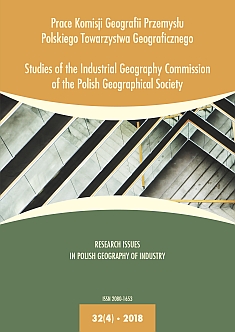Public Statistics Resources as a Source for Research in Geography of Industry
Public Statistics Resources as a Source for Research in Geography of Industry
Author(s): Maciej Ryczkowski, Wiesława GierańczykSubject(s): Economy, Geography, Regional studies, Labor relations
Published by: Wydawnictwo Uniwersytetu Komisji Edukacji Narodowej w Krakowie
Keywords: administrative data sources; commuting; geography of industry; labour market areas; public statistics sources;
Summary/Abstract: The article aims to present data resources for the needs of research in geography of industry in Poland. These sources can be independently obtained primary sources or secondary sources. Primary data have a unique value. They are collected for a specific purpose to solve a specific problem. They usually allow for a detailed description of the theme under investigation. As they are obtained directly from the surveyed entities during statistical research, they show timeliness and originality. In the research in geography of industry, primary data sources are used relatively rarely. It is mainly due to the time-consuming and costly nature of this type of research and the increasing difficulties in obtaining consent for research from respondents. Therefore, secondary data, which are the results of previous research, primarily by Statistics Poland, are especially popular. Statistics Poland, deals with issues useful from the point of view of the research in geography of industry, both in the form of surveys of the official statistics and as part of experimental studies. The article describes research carried out by Statistics Poland, which provides essential information about the industry and its location. Administrative data sources which may be helpful in this regard have also been mentioned. Public statistics has access to many of them. The area of interest of official statistics regarding data on industrial activities also refers to the data on the labour areas, which were created using the European version of the TTWA algorithm. The argument presented in this article proves that public statistics investigates a broad spectrum of phenomena related to industrial activities, and the results of these studies are and may be widely used by researchers in geography of industry.
Journal: Prace Komisji Geografii Przemysłu Polskiego Towarzystwa Geograficznego
- Issue Year: 32/2018
- Issue No: 4
- Page Range: 240-251
- Page Count: 12
- Language: English

